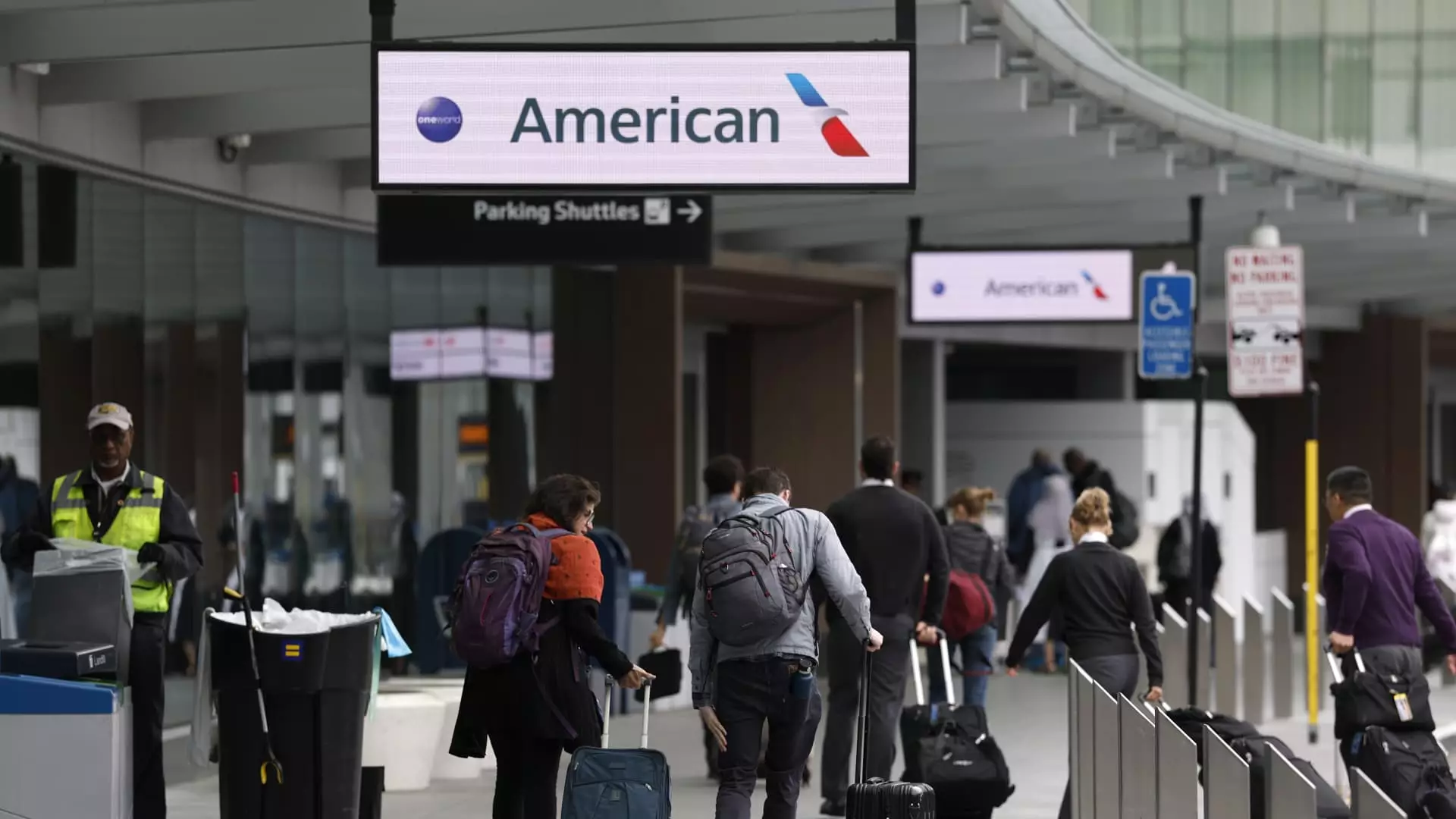7 Shocking Signs that a Recession is Looming for Airlines

The airline industry has long been viewed as a bellwether for the broader economy. However, recent warnings from airline executives signal that clouds are gathering over this vital sector. American Airlines CEO Robert Isom’s candid remarks about dwindling consumer enthusiasm for air travel illustrate a troubling reality: uncertainty is eating away at consumer confidence. In a manner reminiscent of previous recessionary periods, travelers are pausing their well-deserved vacations as they grapple with financial trepidation.
At a time when airlines initially had high hopes for the upcoming travel season, the latest reports reveal a stark change of course. Airlines like Delta, Southwest, and United are now scaling back their capacity growth plans—a stark contrast to their bullish expectations just months prior. The shift suggests that even in an industry fueled by wanderlust, economic pressures are forcing consumers to reevaluate their spending behavior. This represents a critical pivot point; if airline executives are bracing for a downturn, it may signal the broader public’s anxiety about their financial future.
Tariffs and Trade: The Heavy Hand of Politics
One of the fundamental factors influencing this appetite for travel seems to be rooted in political decisions—specifically, the fluctuating tariff policies of the Trump administration. An erratic trade landscape burdens consumers and corporations alike, fostering an environment of unpredictability. As substantial tariffs influence the price of goods, consumers are naturally cautious about discretionary spending, such as travel. This is a prime example of how political decisions create ripple effects that extend far beyond their initial impact.
Corporate travel, once an anchor for most airlines, is suffering the fallout of these policies and the associated economic instability. Analysts are reporting that, at the first signs of uncertainty, corporate travel budgets traditionally are the first to be slashed. As companies tighten their belts, the effects are felt immediately in airline revenues. Hence, the axiom rings true: “When the economy coughs, the airlines catch a cold.”
Price Cuts: A Desperate Measure for Survival
In an industry notorious for its razor-thin profit margins, airlines resorting to lower fares might seem like survival tactics issued in desperation. Data from the Bureau of Labor Statistics reveals that airfare dipped by 5.3% in March compared to last year, indicating a frantic scramble to fill seats that are increasingly available as demand wanes. Alaska Airlines, in particular, highlighted how pricing strategies have adapted to unexpected demand slumps, and while some may cheer lower ticket prices, this reflects troubling undercurrents for the business model.
As airlines cut prices to attract travelers, it raises critical questions about sustainability and profitability. Can lower fares provide a viable band-aid for systemic demand issues? Or are they an ominous sign of deeper economic wounds? A race to the bottom on ticket costs may boost temporary sales, but it could portend long-term instability for the industry, which thrives on stability rather than volatility.
The Elevated Status of Business Travel: Is It Enough?
While leisure travel faces headwinds, business travel traditionally acts as the backbone of airline profitability. The argument has been made that corporate travelers, who are generally less sensitive to price changes, should be able to buoy revenues even amidst fading consumer interest in leisure travel. Yet, this sanctuary is proving to be less reliable than anticipated as companies curb expenses in a climate of uncertainty.
Delta’s CEO noted a concerning flattening in corporate travel growth after an initial uptick—a trend that points to vulnerabilities in even the most stable segments of the travel market. The truth is, if uncertainty continues to cast a shadow over the economy, business travelers, like their leisure counterparts, will continue to think twice before booking flights, which may decimate any hope for recovery.
Airline Executives and the Search for Certainty
Despite these troubling indicators, airline executives are clinging to a belief in a robust recovery, rooted in the notion that “certainty will restore the economy.” However, that hope runs counter to the observable patterns of consumer behavior and economic sentiment. Business confidence is the lifeblood that fuels the travel industry, and when uncertainty looms large, it is challenging to maintain optimism.
In a landscape where tariffs, economic warnings, and shrinking travel budgets intersect, one cannot help but wonder: Is this the calm before the storm, or a prologue to a larger narrative of economic decline? While the optimism from executives like Isom may serve as a veneer of reassurance, the industry’s shaky foundations are exposed, calling for serious reflection on the measures required to stabilize a sector that is facing some of its most formidable challenges yet.





